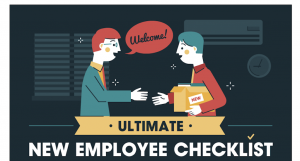Training employees is vital to the success of an organization, but it can be difficult to keep track of what each employee needs. This is why many managers use employee training plan templates to guide their efforts.
In this article, we’ll explain what an employee training plan template is, how to make one, and tips for making your template as effective as possible. We’ll also show you a few examples of training plan templates.
Key Takeaways
-
Employee training plan templates are used to lay out the training an employee will complete within a certain amount of time.
-
Consider who is being trained and who is going to be using the template when creating an employee training plan template.
-
Make sure your training plan aligns with the company’s training budget and overall goals.
What Is an Employee Training Plan Template?
An employee training plan template is a document that lays out what an employee’s training program will cover. It can include:
-
The goal of the training.
-
Intended learning outcomes.
-
Activities and topics to be covered during the training.
-
Training schedule.
-
Career development plans.
-
Training checklist.
Because they prevent managers and trainers from having to start from scratch with every employee training, employee training plan templates create continuity and track employee training progress across the organization.
How To Make an Employee Training Plan Template
When you’re making an employee training plan template, there are a few steps you need to follow in order to be successful.
-
Establish the purpose of the training plan template. A training plan template for a new employee is going to look very different than the one you make for a manager’s career development plan. Establish a clear purpose for the template before you begin by asking yourself these questions:
-
Who is going to be trained? Is this an intern, a mid-level manager, or an executive?
-
What is the ultimate goal of their training? Are you trying to get them ready to do their job without supervision, or are you creating a long-term development plan?
-
What skills do they need? What skill gap are you trying to fill with this training?
-
What type of training do they need? Do you have an appropriate in-house video or class, or does it need to be a nationally standardized course and test? Or something else?
When you answer these questions, it will become much simpler to create your training plan template.
-
-
Set long-term goals and objectives. You have to establish the finish line for the training; otherwise, there is little point in having employees complete it.
Common long-term training goals are getting the employee ready to step into their superior’s role when they retire or ensuring they’re trained and certified to take a promotion or different job within the company when the time comes.
Your long-term goal may also simply be getting the employee fully onboarded. Whatever it is, make sure your goal is highly measurable, lines up with the company’s overall goals, and balances cost and benefit. The goal should also be clear to employees so they can appreciate the value of completing the training.
-
Set short-term goals and objectives. Now that you know the end goal of the training plan, it’s time to lay out the short-term goals and objectives that will get you to the finish line. These usually involve becoming certified or proficient in a skill or job function by completing a course or project.
-
Create the training schedule. Employee training plan templates need to have dates assigned to each objective and task, as well as each training course.
For an onboarding training plan template, for example, you’d likely list out checkpoints such as “Before Arrival,” “First Day,” “First Week,” etc., and assign tasks and training to each one.
For long-term development plans, you may want a list of training courses for the employee to complete within the six months or so and then another one for the next year, three years, etc.
-
Establish who is responsible for administering the training. When you’re creating an employee training plan template, you’ll likely leave this section blank, but it’s important to include it.
You can also name a position in charge of administering the training. For example, you could list “employee’s direct supervisor” or “HR representative” with a blank space for a name on your template.
-
Have your template peer-reviewed. Once your template is complete, ask the people who are actually going to be using it to review it and give you their feedback.
It’s actually a good idea to ask for feedback regularly, as they’ll likely see problems or come up with new ideas the more they use it.
Example Employee Training Plan Templates
-
Employee Onboarding Training Template
Here’s an example of a training template you might create for managers to use as they onboard new employees.
Date Due Task Who Completed/ Name of Training Date Completed First Week Welcome video training Facilities tour Project management software training Second Week OSHA bloodborne diseases training Sexual harassment training Information privacy training First 30 Days Skills training of choice #1 Skills training of manager’s choice #2 Skills training of manager’s choice #2 First 6 Months Employee communications assessment and training Skills training of choice First Year Cross-training of choice #1 Cross-training of choice #2 -
Long-Term Employee Training Plan
If you’re creating a long-term employee development plan template, here’s an example to help you get started.
Training Area Resources Time Frame Skill #1 Skill #2 Instructor/ Facilitator Course/ Training method Start Date End Date Short-term development for current position Mid-term (2-5 years) development for current or future position Long-term (5+ years) development for future career goals
Things To Consider When Creating an Employee Training Plan Template
In addition to the basics of what your employee training plan template needs to include, there are a few other factors you need to keep in mind.
-
Who’s going to be using this template? The answer to this question determines not only what needs to be included in the template but also how vague or open-ended it needs to be.
For example, if you’re making a template for one department to use, it can include more specifics that would be useful for that department. On the other hand, if you’re making a template for every department of the company to use, it will need a more universal and vague language that can be applied to any area.
-
Your training budget. Don’t set up managers for failure by giving them employee training plan templates that expect a level of training that the company can’t or won’t fund.
Check to see how much each manager or department has to spend on their employees’ training, and make a template that reflects that.
-
Set up ways to continuously reevaluate. Training methods and plans should be continuously revisited and updated. Choose a date and set a reminder in your calendar to do this.
If you’re making this template for others to use, reach out and ask for their input on what they want to be changed when it’s time to reevaluate. You may also want to consider asking employees how they feel their training and development have been and if the templates have been helpful, neutral, or harmful.
-
Train people on how to use the template. Whether you’re creating employee training plan templates for managers to use for their employees or for employees to use directly, you need to teach them how to use them.
Otherwise, you miss out on the continuity benefits that these templates could bring, and they aren’t nearly as effective.
Employee Training Plan FAQ
-
How do I write an employee training plan?
You write an employee training plan by assessing training needs, setting goals and objectives, and determining the ways the training will be administered. The first step to writing a training plan is to figure out what the purpose of the plan is, which employees are you trying to train, and for what?
After you establish this, you need to set both the short-term and long-term goals and objectives for this particular training plan. In this context, long-term goals are the goal you want to reach at the end of the training plan, and short-term goals are the smaller steps your employee will take to get there.
Finally, you need to decide what training methods or classes will be used to administer this training, as well as who will administer it and when they need to do it. Make sure these are all reasonable plans that align with the company’s budget and overall goals.
-
What are the four main objectives of training?
The four main objectives of the training are to increase the individual’s awareness, skills, motivation to perform well, and overall productivity and performance.
Training can be a great way to bring awareness to an issue that many employees may not think about otherwise. Diversity and inclusivity, sexual harassment, and confidentiality training are all examples of how training can improve awareness.
Training shouldn’t just stop at awareness, however. It needs to improve individuals’ skills by providing practical tips as well as opportunities to practice them in a controlled environment.
In addition, good training should increase an employee’s motivation to perform well in their job. To do this, the training needs to demonstrate the importance of the task or job the employee is performing and inspire them with what they could accomplish if they work hard at it.
Finally, training employees should always result in improved productivity and performance. To do this, the training should be relevant to the employee’s role and responsibilities and should give them practical steps on how to work more effectively and efficiently.




